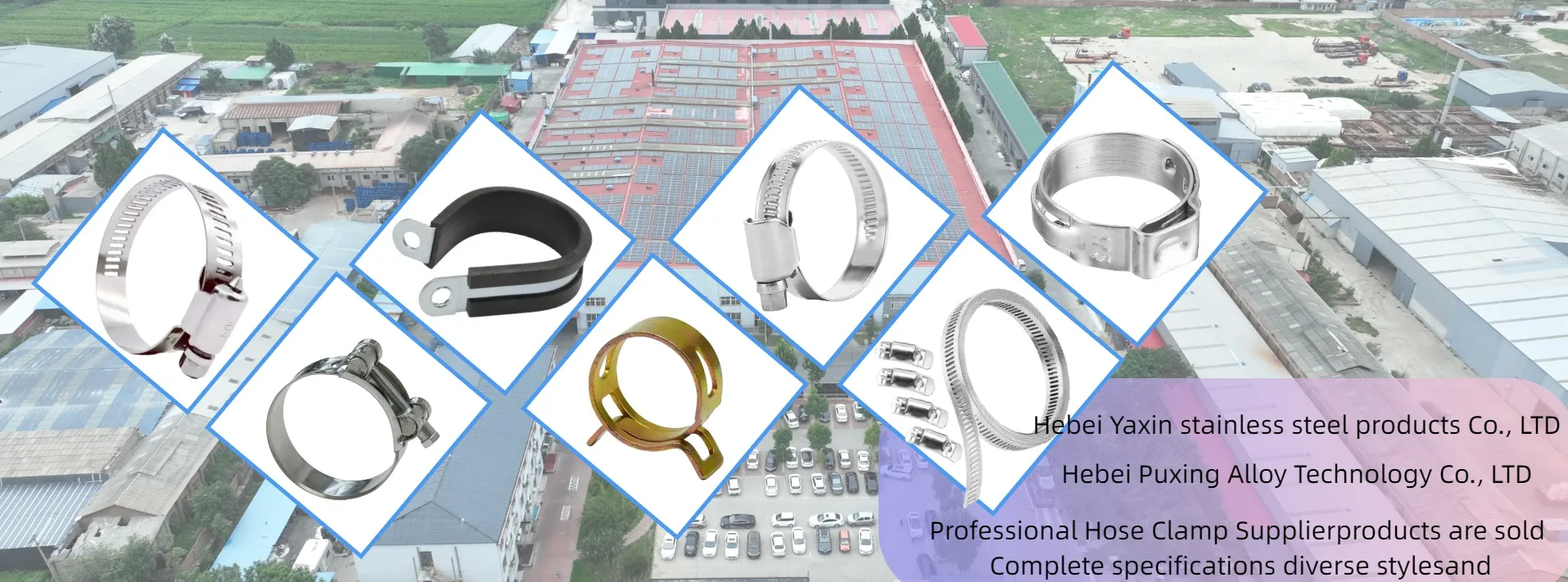- Phone:+86-17331948172 +86-0319-8862898
- E-mail: inquiry@puxingclamp.com
Ago . 27, 2025 02:20 Back to list
Premium 316L Stainless Steel Strip | Corrosion Resistant
Elevating Performance with 316L Stainless Steel Strip: An Industrial Deep Dive
In critical industrial applications where corrosion resistance, high-temperature strength, and long-term durability are paramount, the choice of material significantly impacts operational integrity and cost-efficiency. Among the various grades of stainless steel, the 316L stainless steel strip stands out as a superior material solution. Its enhanced molybdenum content imbues it with exceptional resistance to pitting and crevice corrosion, particularly in chloride-rich environments, making it indispensable across diverse demanding sectors.
Industry Trends Driving Demand for High-Performance Stainless Steel
The global industrial landscape is increasingly prioritizing materials that offer extended service life, reduced maintenance, and compliance with stringent environmental regulations. This trend directly fuels the demand for advanced stainless steel alloys. Key drivers include:
- Infrastructure Modernization: Aging infrastructure in petrochemical, water treatment, and energy sectors necessitates robust materials capable of withstanding aggressive operating conditions for decades.
- Environmental Stewardship: Industries are seeking materials that prevent leakage, minimize hazardous material release, and contribute to energy efficiency through improved system reliability.
- Technological Advancement: Miniaturization and precision engineering in sectors like medical devices and electronics require high-quality, consistent, and often flexible stainless steel strip solutions with superior surface finishes.
- Global Supply Chain Resilience: Manufacturers are looking for reliable `201 stainless steel strip supplier` and other critical grades, ensuring consistent quality and availability amidst geopolitical shifts and market fluctuations.
The market for precision-engineered stainless steel strips, including specialized grades like 316L stainless steel strip, is projected to grow steadily, driven by these overarching industrial imperatives and the continuous pursuit of material excellence.
The Meticulous Manufacturing Process of 316L Stainless Steel Strip
The production of high-quality 316L stainless steel strip is a complex, multi-stage process that demands precision engineering and rigorous quality control at every step. Adherence to international standards like ISO and ASTM is critical to ensure the final product meets the demanding specifications of target industries such as petrochemical, metallurgy, and water supply & drainage.
Detailed Process Flow:
- Raw Material Sourcing & Melting: High-purity iron, chromium, nickel, and molybdenum (the defining element for 316L) are precisely measured and melted in an electric arc furnace (EAF) or induction furnace. This is followed by Argon Oxygen Decarburization (AOD) to refine the molten metal, reduce carbon content to the 'L' (low carbon) level, and achieve the exact chemical composition.
- Casting: The refined molten steel is cast into continuous slabs or billets. This process ensures a uniform internal structure, minimizing defects.
- Hot Rolling: Slabs are reheated and passed through a series of rollers at high temperatures (typically above 1000°C). This reduces the thickness significantly, refines the grain structure, and produces hot-rolled coils or plates.
- Annealing & Pickling (Hot Rolled): The hot-rolled material undergoes annealing, a heat treatment process that softens the steel, relieves internal stresses, and improves ductility. This is followed by pickling, where acid solutions remove surface scale and impurities, preparing it for cold rolling.
- Cold Rolling: The material is then processed at room temperature through specialized cold rolling mills. This further reduces thickness, enhances surface finish, and significantly increases mechanical strength and hardness. Multiple passes are often required to achieve the desired gauge.
- Intermediate Annealing & Pickling (Cold Rolled): For very thin gauges or specific mechanical properties, intermediate annealing and pickling steps may be repeated between cold rolling passes to restore ductility.
- Slitting & Edge Conditioning: The wide cold-rolled coils are then slit into narrower strips of specified widths. Edge conditioning (e.g., deburring, specific edge profiles) can be performed to meet precise application requirements.
- Final Finishing & Surface Treatment: Depending on the application, additional surface treatments like bright annealing (for a highly reflective finish), polishing, or specific coating may be applied. This is often where advanced techniques, including highly precise CNC machining, might be used for specialized edge profiles or surface textures.
- Testing & Quality Assurance: Every batch undergoes extensive testing, including chemical analysis, mechanical property tests (tensile strength, yield strength, elongation), hardness tests, and corrosion resistance tests (e.g., salt spray, intergranular corrosion tests as per ASTM A262). Dimensions, flatness, and surface quality are rigorously checked against standards like ISO 9001 and ASTM A240.
- Packaging: The finished 316L stainless steel strip is carefully packaged to prevent damage during transit and storage, typically involving protective wraps and sturdy wooden pallets or crates.
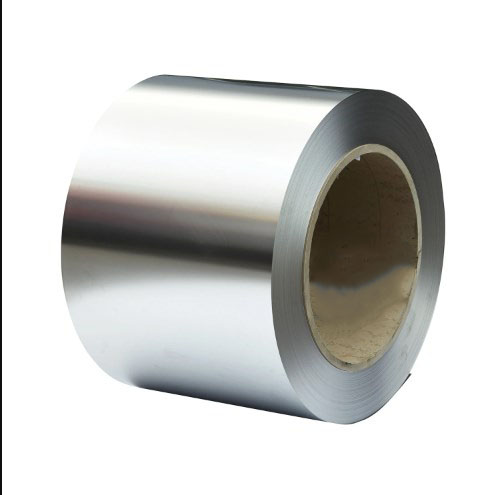
Schematic representation of the intricate process for manufacturing high-grade 316L stainless steel strip.
This comprehensive process ensures that the finished 316L stainless steel strip exhibits consistent metallurgical properties, superior corrosion resistance, and the specified mechanical characteristics, ensuring a long service life and high performance in its intended applications.
Technical Specifications and Material Properties of 316L Stainless Steel Strip
Understanding the precise technical specifications of 316L stainless steel strip is crucial for engineers and procurement specialists to ensure optimal material selection for demanding applications. The 'L' in 316L signifies low carbon content, which minimizes carbide precipitation during welding, thereby preventing intergranular corrosion and maintaining the material's integrity in corrosive environments.
Chemical Composition (Weight %):
| Element | Weight % (ASTM A240) |
|---|---|
| Carbon (C) | 0.03 max |
| Manganese (Mn) | 2.00 max |
| Phosphorus (P) | 0.045 max |
| Sulfur (S) | 0.030 max |
| Silicon (Si) | 0.75 max |
| Chromium (Cr) | 16.00 – 18.00 |
| Nickel (Ni) | 10.00 – 14.00 |
| Molybdenum (Mo) | 2.00 – 3.00 |
| Nitrogen (N) | 0.10 max |
| Iron (Fe) | Balance |
Mechanical Properties (Annealed Condition):
| Property | Value (Metric) | Value (Imperial) |
|---|---|---|
| Tensile Strength (Rm) | 485 MPa min | 70 ksi min |
| Yield Strength (Rp0.2) | 170 MPa min | 25 ksi min |
| Elongation (A50mm) | 40% min | 40% min |
| Hardness (Rockwell B) | 95 max | 95 max |
Key Performance Indicators & Terminology:
- Pitting Resistance Equivalent Number (PREN): For 316L, PREN typically ranges from 24 to 31, significantly higher than 304L (PREN 18-20). This value, calculated as PREN = %Cr + 3.3 × %Mo + 16 × %N, directly quantifies the material's resistance to localized pitting corrosion in chloride-containing environments. A higher PREN indicates superior resistance.
- Corrosion Resistance: Excellent resistance to a wide range of atmospheric, fresh water, and marine environments. Particularly good against sulfuric acid, hydrochloric acid, acetic acid, formic acid, and tartaric acid, as well as acid sulfates and alkaline chlorides. The low carbon content enhances resistance to intergranular corrosion after welding.
- High Temperature Properties: Good oxidation resistance in intermittent service to 870°C (1600°F) and in continuous service to 925°C (1700°F). It retains better strength at elevated temperatures compared to 304L.
- Fabricability: Easily welded by all standard fusion methods, with or without filler metals. Post-weld annealing is not required. Cold working characteristics are similar to 304L.
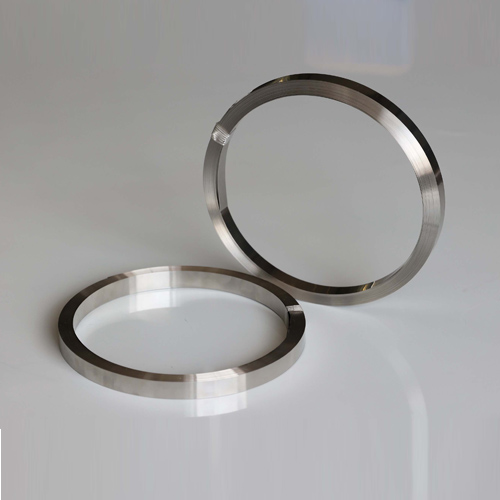
Precision-cut 316L stainless steel strip ready for specialized applications.
These precise specifications underline why 316L stainless steel strip is the material of choice for applications demanding exceptional performance and reliability in aggressive conditions.
Application Scenarios and Technical Advantages of 316L Stainless Steel Strip
The unique properties of 316L stainless steel strip make it a versatile material, indispensable across a spectrum of industries where durability, hygiene, and corrosion resistance are non-negotiable. Its technical advantages translate directly into operational benefits, including extended service life and enhanced energy saving through reduced downtime and maintenance.
Key Application Sectors:
- Petrochemical and Chemical Processing: Used extensively in heat exchangers, pressure vessels, pipelines, and storage tanks for handling corrosive chemicals, acids, and aggressive process streams. The molybdenum content provides superior resistance to chloride-induced stress corrosion cracking and general corrosion.
- Marine and Offshore Environments: Ideal for shipbuilding components, offshore platforms, seawater piping systems, and marine architectural elements due to its exceptional resistance to saltwater corrosion and pitting. Components like cable ties made from flexible stainless steel strip are common here.
- Medical and Pharmaceutical Industries: Biocompatibility and ease of sterilization make 316L suitable for surgical instruments, implants, pharmaceutical manufacturing equipment, and laboratory apparatus. Its resistance to biological fluids and cleaning agents is critical.
- Food Processing and Brewing: Employed in tanks, conveyors, evaporators, and other equipment where hygiene is paramount. Its non-reactive surface prevents contamination and is easy to clean, meeting stringent food safety standards.
- Water Treatment and Desalination Plants: Components exposed to treated or untreated water, including reverse osmosis systems, filters, and piping, benefit from 316L's corrosion resistance, ensuring long-term operational integrity in demanding aqueous environments.
- Pulp and Paper Industry: Withstands corrosive bleaching solutions and other chemicals used in paper manufacturing.
- Architectural Applications: While often associated with `304l stainless steel strip`, 316L is chosen for coastal or highly polluted urban areas for facades, roofing, and structural elements where enhanced corrosion resistance is required to preserve aesthetic appeal and structural integrity over decades.
Key Technical Advantages:
- Superior Corrosion Resistance: The primary advantage, especially in chloride-rich and acidic environments, due to 2-3% molybdenum content. This leads to significantly longer component life compared to standard austenitic grades like `304l stainless steel strip` or `301 stainless steel strip`.
- Enhanced Weldability: The low carbon (L) designation minimizes chromium carbide precipitation during welding, preventing intergranular corrosion in the heat-affected zone. This eliminates the need for post-weld annealing, reducing manufacturing costs and complexity.
- High-Temperature Strength: Retains excellent mechanical properties and creep resistance at elevated temperatures, making it suitable for high-temperature process equipment.
- Hygienic and Easy to Clean: Its smooth, non-porous surface makes it ideal for applications requiring strict hygiene, such as food and medical processing.
- Energy Saving and Cost Efficiency: By extending the service life of components and reducing the frequency of repairs or replacements, 316L contributes to substantial energy saving and lower lifecycle costs. Its reliability minimizes operational downtime, optimizing industrial processes.
- Formability and Ductility: Despite its strength, 316L retains excellent formability, allowing for complex fabrications and precision components.
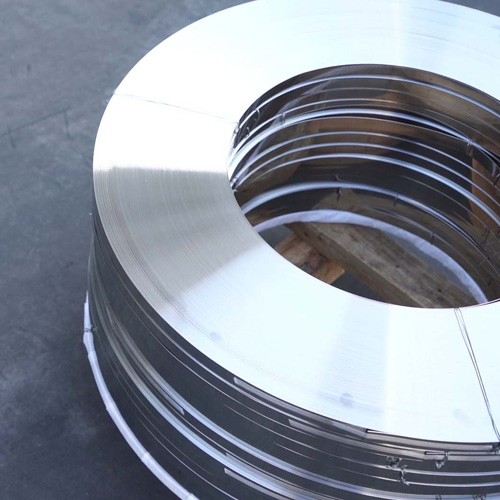
Corrosion-resistant 316L stainless steel strip components for demanding industrial use.
The strategic deployment of 316L stainless steel strip is a testament to its unparalleled performance in environments where lesser materials would quickly succumb to degradation, ultimately safeguarding capital investments and ensuring operational continuity.
Vendor Comparison and Related Stainless Steel Grades
Choosing the right supplier for 316L stainless steel strip is as critical as selecting the material itself. A reputable vendor offers not only quality products but also technical expertise, customization capabilities, and reliable support. Furthermore, understanding the distinctions between various stainless steel grades is essential for making informed procurement decisions.
Factors for Vendor Comparison:
- Certifications and Quality Assurance: Look for ISO 9001, ASTM, and other relevant industry certifications (e.g., PED for pressure equipment). This indicates adherence to strict manufacturing and quality control standards.
- Material Traceability: A reliable supplier provides full traceability of materials, from raw ingot to finished product, ensuring transparency and accountability.
- Customization Capabilities: The ability to provide specific widths, thicknesses, finishes, tempers, and edge conditions is crucial for specialized applications.
- Technical Expertise and Support: A vendor who can offer engineering consultation and guidance on material selection and application is invaluable.
- Lead Time and Logistics: Efficient production schedules and reliable global logistics ensure timely delivery, critical for project timelines.
- Competitive Pricing & Value: While cost is a factor, prioritize the overall value, considering product quality, service life, and support, rather than just the lowest price.
Comparison of Common Stainless Steel Strip Grades:
While 316L stainless steel strip excels in high-corrosion environments, other grades like `201 stainless steel strip supplier`, `301 stainless steel strip`, and `304l stainless steel strip` also play vital roles. Understanding their differences is key.
| Feature | 316L Stainless Steel Strip | 304L Stainless Steel Strip | 301 Stainless Steel Strip | 201 Stainless Steel Strip |
|---|---|---|---|---|
| Corrosion Resistance | Excellent (with Mo, esp. against chlorides) | Good (general purpose) | Good (similar to 304 in mild settings) | Moderate (lower Ni, prone to pitting in severe environments) |
| Molybdenum Content | 2.0-3.0% (Present) | None (Absent) | None (Absent) | None (Absent) |
| Carbon Content | Low (0.03% max) | Low (0.03% max) | Higher (0.15% max) | Higher (0.15% max) |
| Weldability | Excellent, no post-weld annealing needed | Excellent, no post-weld annealing needed | Good, but higher carbon can mean intergranular corrosion risk | Good, but requires careful consideration for intergranular corrosion |
| Strength (Cold Worked) | Good work hardening | Good work hardening | Very High (designed for high strength) | High (due to Mn/N) |
| Typical Applications | Marine, chemical, medical, food processing, pharmaceutical | General industrial, architectural, kitchen equipment | Springs, shims, structural aircraft components, rail cars | Cost-sensitive applications, architectural, automotive trim (mild environments) |
This comparison highlights the specific niche and performance benefits of each grade, affirming 316L's position as a premium choice for environments demanding superior corrosion resistance and longevity.
Customized Solutions and Engineering Partnership
Recognizing that standard products rarely meet the intricate demands of specialized industrial applications, we emphasize the provision of highly customized solutions for 316L stainless steel strip. Our approach involves a deep engineering partnership with our clients, ensuring that every dimension, finish, and property precisely matches the project's requirements.
Tailored Specifications:
- Precision Dimensions: We offer strip in widths ranging from millimeters to several meters, with thicknesses down to micrometers. Precision slitting, edge deburring, and specific edge profiles (e.g., rounded, square, custom contours) are available to facilitate seamless integration into complex assemblies.
- Surface Finishes: From standard 2B (smooth, matte finish) and BA (bright annealed, reflective) to specialized polished finishes (e.g., #4, #8 mirror) or custom textures, we can cater to both functional and aesthetic requirements, crucial for applications like medical devices or architectural panels.
- Mechanical Properties/Temper: Beyond the standard annealed condition, we can supply 316L in various tempers (e.g., 1/4 hard, 1/2 hard, full hard) through controlled cold rolling, achieving specific tensile strengths, yield strengths, and hardness levels to suit spring applications, structural components, or components requiring enhanced rigidity.
- Coil ID/OD and Packaging: Custom coil inner and outer diameters, along with specific winding tension and packaging methods (e.g., oscillation wound, traverse wound, individually wrapped, wooden crates) are provided to optimize handling, storage, and feed into automated production lines.
- Specialized Coatings/Treatments: For unique demands, we can explore partnerships for specific surface treatments, such as passivation for enhanced corrosion resistance, or specialized coatings for anti-friction or conductive properties.
Collaborative Engineering and Support:
Our team of metallurgists and engineers works closely with clients from the initial design phase through to production. This includes:
- Material Selection Consultation: Guidance on selecting the optimal stainless steel grade and specific temper for the intended application, considering factors like environment, stress, and cost.
- Design for Manufacturability (DFM): Recommendations to optimize part design for efficient and cost-effective production using our strip materials.
- Prototyping and Small Batch Production: Support for developing and testing new products with smaller, specialized runs before scaling up to full production volumes.
- Technical Data and Certification: Provision of comprehensive material test reports (MTRs) and compliance certificates (e.g., EN 10204 3.1, RoHS, REACH) for all supplied materials.
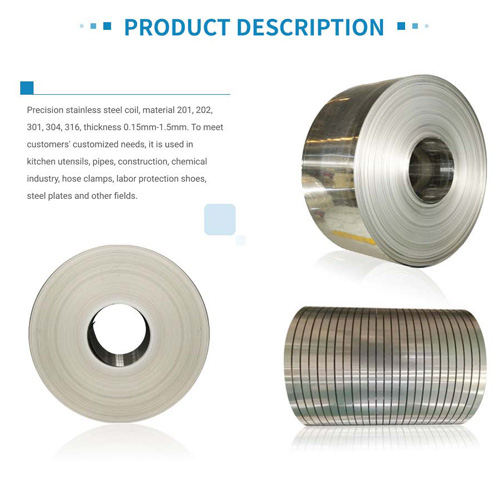
Precision slitting of 316L stainless steel strip for custom width requirements.
This commitment to customized solutions and collaborative engineering ensures that our 316L stainless steel strip precisely fits the unique demands of each project, delivering both performance and economic benefits.
Real-World Application Case Studies: 316L Stainless Steel Strip in Action
The robust performance of 316L stainless steel strip is best demonstrated through its successful deployment in challenging real-world applications. These case studies highlight its unparalleled corrosion resistance and durability in critical industrial settings.
Case Study 1: Heat Exchanger Components for a Pharmaceutical Facility
- Challenge: A leading pharmaceutical manufacturer needed to replace heat exchanger tubing in a system that processed highly corrosive chlorinated solutions. Previous materials (304L stainless steel) had shown premature pitting and crevice corrosion, leading to frequent costly shutdowns and cross-contamination risks.
- Solution: Our team recommended a specific temper and surface finish of 316L stainless steel strip for the heat exchanger fins and tubes. The enhanced molybdenum content provided superior resistance to chloride-induced corrosion, while the low carbon variant ensured excellent weldability without post-weld heat treatment, crucial for maintaining tight production schedules.
- Outcome: After two years of continuous operation, the 316L components showed no signs of pitting or crevice corrosion, significantly extending the service life of the heat exchangers. This resulted in a 40% reduction in maintenance costs and a substantial improvement in operational reliability, demonstrating the material's energy-saving benefits through prolonged efficiency.
Case Study 2: Subsea Cable Armor for Offshore Energy Platform
- Challenge: An offshore oil and gas operator required exceptionally durable and corrosion-resistant material for the armor of subsea control cables exposed to harsh marine environments (seawater, high pressure, varying temperatures). The material needed to withstand constant movement and prevent ingress of corrosive elements.
- Solution: We supplied `flexible stainless steel strip` made from 316L stainless steel strip, precisely cold-rolled to a specific temper for enhanced strength and fatigue resistance, yet pliable enough for coiling around the cable core. The strip was engineered with specific edge conditions to ensure smooth winding and prevent stress concentrations during deployment.
- Outcome: The 316L armored cables demonstrated exceptional performance over five years of deployment. The superior pitting and crevice corrosion resistance ensured the integrity of the inner components, leading to an estimated 25% increase in cable lifespan compared to standard grades and significantly reduced risk of costly underwater repairs. This case highlights not only longevity but also the critical role of custom material specification.
Case Study 3: Precision Gaskets for High-Pressure Chemical Reactors
- Challenge: A chemical plant needed gaskets for high-pressure reactors operating with aggressive acids and requiring exceptional long-term sealing integrity. The gaskets had to maintain precise dimensions and material properties under extreme thermal cycling and chemical exposure.
- Solution: We provided ultra-thin 316L stainless steel strip with a mirror-finish surface (BA finish) and precise dimensional tolerances. The low carbon content ensured superior corrosion resistance even in the presence of strong acids, while the excellent surface finish contributed to an optimal seal.
- Outcome: The 316L gaskets performed flawlessly, eliminating previous issues of leakage and material degradation that plagued earlier solutions. The extended operational life of the gaskets meant fewer shutdowns for replacement, contributing to improved plant safety and a significant reduction in operational expenditure. The superior material choice directly contributed to operational efficiency and energy saving.
These examples illustrate the tangible benefits of selecting high-grade 316L stainless steel strip for demanding industrial applications, underscoring its role in ensuring system reliability and optimizing long-term performance.
Trustworthiness and Customer Assurance
At the core of our operations is a steadfast commitment to building trust and ensuring complete customer satisfaction. We achieve this through transparent processes, robust quality control, and comprehensive support services for our 316L stainless steel strip products.
Frequently Asked Questions (FAQ):
-
Q: What makes 316L superior to 304L stainless steel for my application?
A: The primary difference is the addition of 2-3% molybdenum in 316L. This significantly enhances its resistance to pitting and crevice corrosion, especially in chloride-rich environments (e.g., seawater, coastal regions, chemical processing). The 'L' (low carbon) designation in both grades minimizes intergranular corrosion after welding.
-
Q: Can you provide material test reports (MTRs) for your 316L stainless steel strip?
A: Absolutely. Every shipment of our 316L stainless steel strip is accompanied by comprehensive MTRs (e.g., EN 10204 3.1) detailing chemical composition, mechanical properties, and compliance with relevant ASTM/ISO standards. Full traceability is guaranteed.
-
Q: What are your typical lead times for custom 316L strip orders?
A: Lead times vary depending on the specific customization (width, thickness, temper, finish) and order volume. For standard configurations, it's typically 3-5 weeks. For highly customized or large-volume orders, we provide a detailed production schedule upon inquiry. Expedited options are available for urgent requirements.
-
Q: Do you offer samples for prototyping and testing?
A: Yes, we understand the importance of validating materials. We can provide samples of 316L stainless steel strip to your specifications for prototyping and in-house testing, subject to a minimum order quantity or specific project requirements.
Lead Time & Fulfillment Details:
We maintain strategic stock levels of common 316L stainless steel strip configurations to facilitate rapid dispatch. For custom orders, our efficient production cycle, optimized for precision, allows for competitive lead times. We leverage a robust global logistics network to ensure on-time delivery to your facility, whether domestic or international. Real-time tracking and dedicated logistics support are part of our standard service.
Warranty Commitments:
Our 316L stainless steel strip products are backed by a comprehensive warranty, guaranteeing material quality, adherence to specified technical parameters, and freedom from manufacturing defects. We stand by the integrity of our products, ensuring they meet or exceed all published specifications and industry standards like ASTM A240 and EN 10088. Any material found to be non-compliant within the warranty period will be promptly replaced or credited.
Customer Support Information:
Our commitment extends beyond delivery. We offer dedicated after-sales support and technical assistance to address any queries or challenges you may encounter during installation or operation. Our team of experienced technical specialists is available for consultation, troubleshooting, and providing expert advice. You can reach our support team via [Email: sales@example.com] or [Phone: +1-XXX-XXX-XXXX]. Our years of service in the B2B sector, coupled with our ISO 9001 certification and a diverse portfolio of satisfied clients across petrochemical, marine, and medical industries, underscore our authoritativeness and reliability as a trusted partner.

Quality inspection ensuring every 316L stainless steel strip meets rigorous standards. (Note: Using the same image as the previous section due to limited unique images provided)
Our goal is to forge long-term partnerships built on trust, quality, and consistent performance.
Conclusion
The choice of materials in demanding industrial environments is a critical decision that impacts safety, operational efficiency, and long-term cost of ownership. The 316L stainless steel strip, with its superior corrosion resistance, enhanced weldability, and robust mechanical properties, consistently emerges as the optimal solution for applications exposed to aggressive media, high temperatures, and stringent hygiene requirements. From the rigorous process flow that ensures metallurgical integrity to its demonstrated success in diverse application scenarios, 316L stainless steel offers an unparalleled combination of performance and reliability. By partnering with a vendor committed to quality, customization, and comprehensive technical support, industries can leverage the full potential of 316L to achieve engineering excellence, extend asset lifecycles, and realize significant energy saving.
Authoritative References
- ASTM A240/A240M, Standard Specification for Chromium and Chromium-Nickel Stainless Steel Plate, Sheet, and Strip for Pressure Vessels and for General Applications. ASTM International.
- ISO 9001:2015, Quality management systems – Requirements. International Organization for Standardization.
- ASM Handbook, Volume 1, Properties and Selection: Irons, Steels, and High-Performance Alloys. ASM International.
- K.J.L. Kennedy, "The Application of Stainless Steel in Marine Environments." Journal of Materials Science.
- U. H. K. Kim, S. P. Lee, "Corrosion Resistance of 316L Stainless Steel in Various Acidic Environments." Materials Science and Engineering.
This is the last article
-
Premium 316L Stainless Steel Strip | Corrosion Resistant
NewsAug.27,2025
-
Durable Adjustable Stainless Steel Hose Clamp - Secure & Rust-Proof
NewsAug.26,2025
-
Premium Adjustable Stainless Steel Hose Clamps for Secure Sealing
NewsAug.25,2025
-
Premium Stainless Steel Hose Clamp - Durable & Rust-Proof
NewsAug.24,2025
-
Premium 201 Stainless Steel Strip - Durable & Cost-Effective
NewsAug.23,2025
-
Precision High Quality Stainless Steel Strip Coils & Rolls
NewsAug.22,2025

